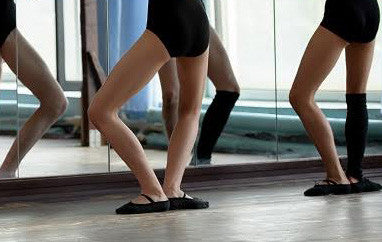
Plies & Jumping
Share

Hello loves!
So today we have a super duper interesting article which the lovely Caroline Topperman aka @styleontheside wrote us about the importance of plies to improve your jumps, so go get your Grand Jete's on and start reading!
XO, Neta
A little bit about Caroline:
Caroline is a blogger and a writer, who started as a dancer and has worked extensively in the fitness and beauty industries. From owning a Pilates studio which was frequented by professional athletes, dancers and Hollywood celebrities to working with international fashion and beauty brands, she has done it all. Caroline’s first book, “FitWise: Straight Talk On Being Fit & Healthy”, combines her unique voice and experience. Find more of her work on her blog Styleontheside.com
WHY ARE PLIES SO CRUCIAL TO YOUR JUMPS?
As dancers, we are constantly being told how important plies are. I can’t think of a single class that I’ve been in where the teacher hasn’t spent time ensuring that we are turning out from our hips and softly going into a plie without bouncing or popping out of it. Sure, we know that plies are part of the ground work for our jumps, but have you ever stopped to really understand them and what your muscles are doing in a plie? Why should you even really care? Well to start, every single jump you will do in class, whether it’s a small elegant sauté or a dramatic grand jete, starts with a basic plie. Not only that, but it also determines how much time you’ll spend in the air and after all, who doesn’t want that effortless look of weightlessness.
LET’S TALK TECHNIQUE
Stand tall. Always remember the basics of a plie and feel like your body is elongating as you bend your knees. Although it feels natural to put your whole body into a jump, focus on using the power of your legs and core muscles. Not only will this help give you the height you want, but it will also give you a more aesthetically featherweight look when you are in the air. A great tip is to do a plie sideways to a mirror and to look at yourself. Are your shoulders in line with your hips? Are your knees pointing straight out the side? They should be. If they aren’t, this could be an indication of some muscle weaknesses and while it may not be making a huge impact now, over the years it will and it can also lead to injuries.
Contract your abdominals. Often called the powerhouse of the body, having a weak core will not only make for a sloppy plie, but it will inhibit you from jumping to your full potential. Even when you are practicing a plie, always think of your abdominals and how they are supporting your spine. Picture your navel pulling in and up toward your spine.
Land softly. The reason your teachers yell at you to land softly is because you can do a lot of damage to your knees if your landings aren’t controlled. You will also be strengthening both your quadriceps and your calf muscles which in turn will give you a better jump.
Pay attention to your feet. Sure, we know that pointing our toes is essential, but how much are you really using your feet in a plie? As dancers, you should be aware of what your feet are doing even in a plie as they are an essential component of a jump. It’s very easy to get lazy and let your arches collapse. Make sure that your feet are firmly planted on the floor because you will be using them to push off the floor as you jump. In turn, this will force you to really point your toes in the air, which is the finishing touch on any jump. Not only that, but the more you focus on your feet the stronger they’ll get and in turn, your jumps will get progressively higher.

Remember to breathe. While you are busy thinking about your feet, your turnout and your abdominal muscles, it’s really easy to forget to breathe. When that happens you wind up with rigid, choppy steps. A smooth controlled breath will enable you to be fluid and graceful. The trick to proper breathing is to stay away from deep belly breathing and to train yourself to breathe laterally (letting your ribcage expand sideways). If you are unsure of how to do this, simply find a partner and ask them to put their hands on your back as you sit in a forward leaning position. As you inhale, feel like you are pressing your ribs into their hands.
Would you believe that this is just an overview of everything you should be thinking about in an exercise that can seem so easy? Every movement that you do in ballet matters and is an important part of the big picture. Whether you are a seasoned pro, a beginner or you fall somewhere in between, it’s definitely worth it to occasionally go back to the basics and think about your technique.
*Photo Credits go to Dollar Photo Club.